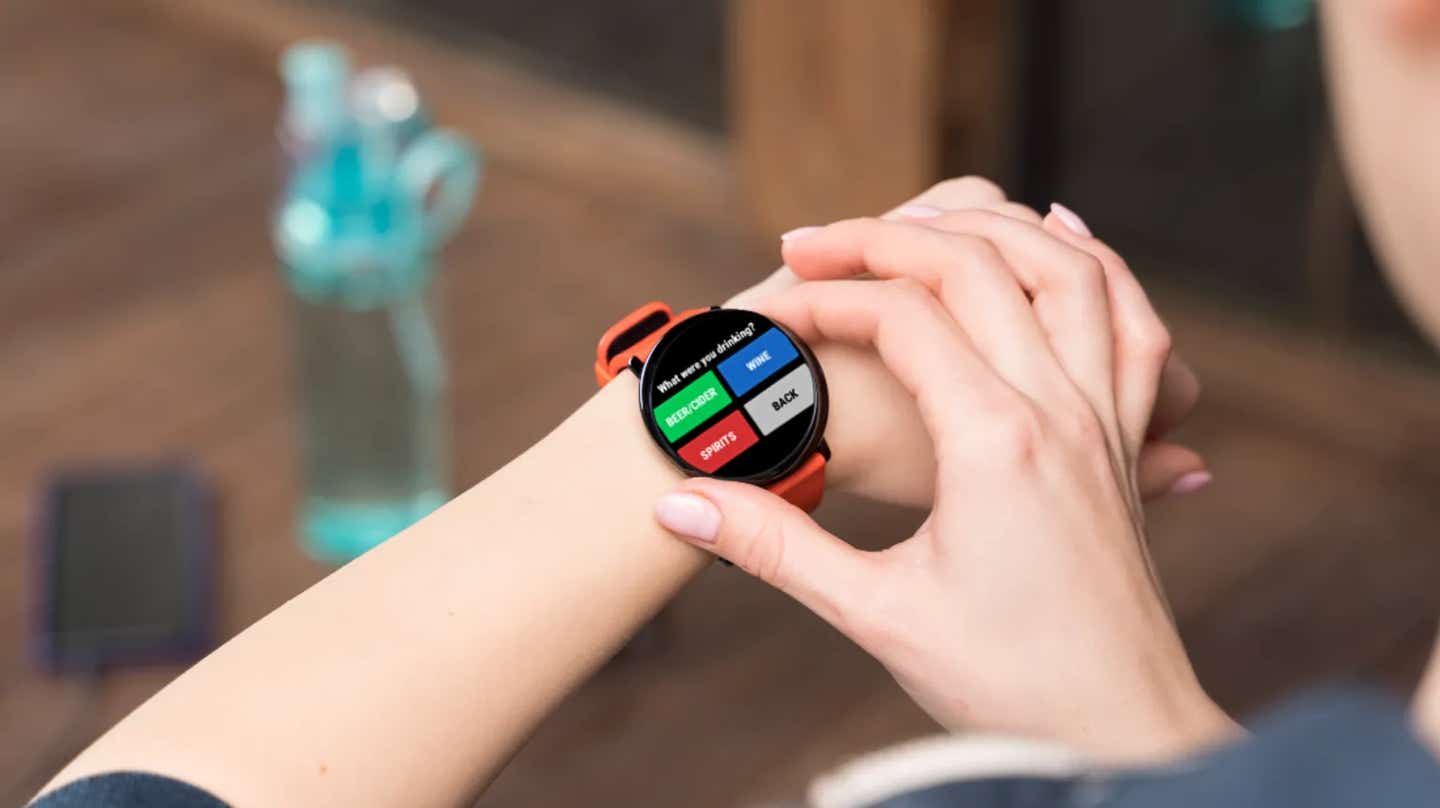Stopping alcoholism gets smarter with smartwatches
A new study shows smartwatches could help track drinking habits more accurately, supporting better health interventions.

Smartwatches offer a smarter way to track drinking habits in real life, helping cut harm from alcohol use. (CREDIT: University of Bristol)
Every year, alcohol-related harm causes about 70 deaths each day in the UK. The health costs linked to this issue reach £3.5 billion annually. In response, researchers continue to explore new ways to monitor and reduce harmful drinking. A new study led by a team at the University of Bristol has shown how smartwatches may offer a better way to track alcohol use in real life.
This new approach uses a tool called microinteraction-based ecological momentary assessment, or μEMA for short. It works on smartwatches and collects small pieces of data throughout the day. This method reduces the pressure on users while increasing accuracy and reliability.
The study, known as AlcoWatch, marks the first time μEMA has been used over a long period to collect alcohol-related data. The findings show strong promise for improving future health interventions around drinking.
Smarter Tracking with Wearable Tech
Researchers tested this new method on 32 people. They were part of a long-term health study and lived in the Bristol area. For 12 weeks, these participants wore basic Android smartwatches equipped with the custom-built AlcoWatch app.
Five times a day, the watch asked them short questions. The questions focused on any alcohol they had consumed in the last two hours, where they drank it, and whether they were alone or with others. The aim was to collect real-time data in natural settings, with minimal disruption to daily life.
Participants also filled out traditional alcohol diaries every two weeks. This method, called the Timeline Followback (TLFB), asks people to recall their drinking over days or even weeks. Although widely used, TLFB has flaws. People often forget details or misremember how much they drank and when.
Related Stories
By comparing smartwatch responses with TLFB diaries, the team could see which method gave a clearer picture of drinking habits.
Greater Engagement and Less Missing Data
The smartwatch method proved far more engaging. People were more likely to respond to prompts on the watch than to complete the online diary. High engagement means fewer missing answers, which leads to more accurate data. That helps scientists better understand drinking patterns.
"Smartwatches have considerable potential for capturing data about alcohol drinking behaviour in people’s real-life environments," said Chris Stone, one of the lead researchers.
Because people respond to the smartwatch in the moment—or soon after drinking—the details are fresher in their minds. This approach avoids the memory problems that come with TLFB.
However, the researchers also noticed a gap in engagement. People from lower-income backgrounds used the smartwatch method less than those from higher-income groups. The reasons for this difference still need to be explored in future research.
Real-World Use with Room to Improve
Participants reported that using the smartwatch felt easy and natural. Since they already wore the device, answering short questions throughout the day didn’t feel like a burden.
This feedback matters because the main goal was to test how well this method works outside a lab. Could it track drinking in everyday settings, over weeks or months? The study shows that it can.
The smartwatch method doesn’t just help collect better data—it could also lead to new ways to support people who want to cut down on alcohol. If researchers understand when and why people drink, they can design better tools to help change those habits.
Dr. Andy Skinner, who co-led the study, explained how this work builds on earlier projects. “We recently demonstrated the usefulness of smartwatches for capturing data about smoking behaviours with ‘StopWatch’ — our smartwatch-based smoking cessation intervention,” he said. “This new study builds on that previous work.”
Smartwatches could eventually support a wider range of health studies. By tracking how people behave in real-time, researchers can learn much more than they could with long, less frequent surveys.
Why This Study Matters
For health professionals, understanding alcohol use can be tricky. People don’t always want to talk about how much they drink. They might forget key details, or report lower numbers than the truth. Traditional methods like online diaries help, but they only go so far.
AlcoWatch changes this by collecting data right when things happen—or close to it. That allows researchers to track how, when, and even why people drink over time. The pattern data could reveal stress-related drinking, social drinking, or daily routines tied to alcohol use.
This level of detail opens the door for custom-made health tools. Someone who drinks more when alone, for example, could receive help built around that specific trigger.
The results suggest that wearable tech, when used with μEMA, could unlock valuable insights into real-life behavior. This method offers a low-cost, low-effort way to collect accurate data that can inform future public health policies and individual treatments.
What’s Next?
The research team plans to look deeper into a few key questions. Why do people from lower-income backgrounds respond less often to smartwatch prompts? Are the watches uncomfortable to wear, or do they need charging too often? Could other designs improve response rates?
They also want to study more groups of people. This would help them learn whether smartwatch-based tracking works well across different ages, cultures, or health conditions.
Long-term, the researchers hope their method will lead to better support for people dealing with alcohol-related problems. More accurate data means better-designed programs that meet people where they are—both physically and emotionally. As Dr. Skinner said, “Smartwatch-based methods for data capture could help researchers explore a much wider range of health-related behaviours, and develop new interventions to help with important issues like problematic drinking.”
This new path forward shows how a simple tool on your wrist could lead to big changes in public health.
Research findings are available online in the journal JMIR Formative Research.
Note: The article above provided above by The Brighter Side of News.
Like these kind of feel good stories? Get The Brighter Side of News' newsletter.



